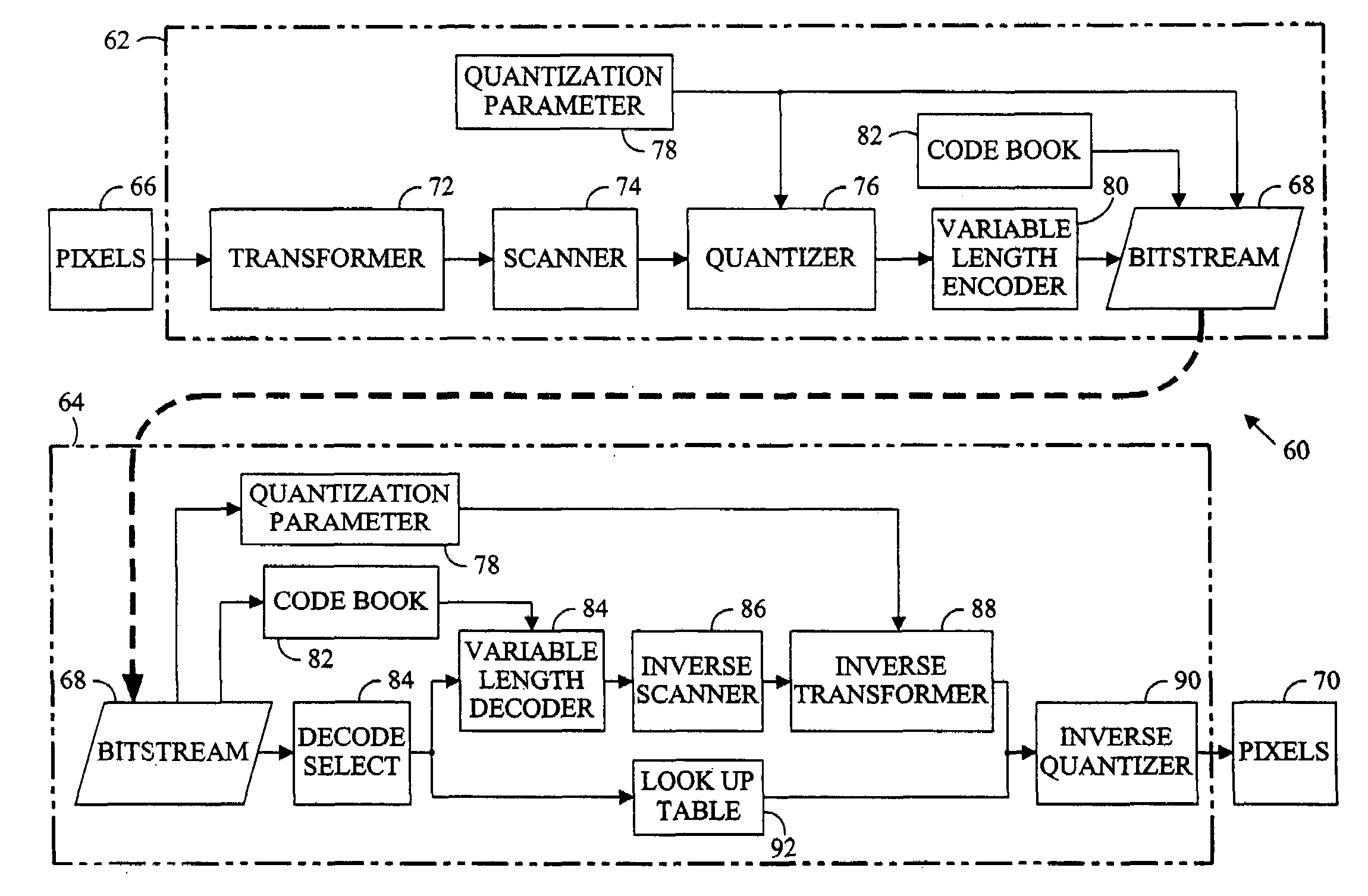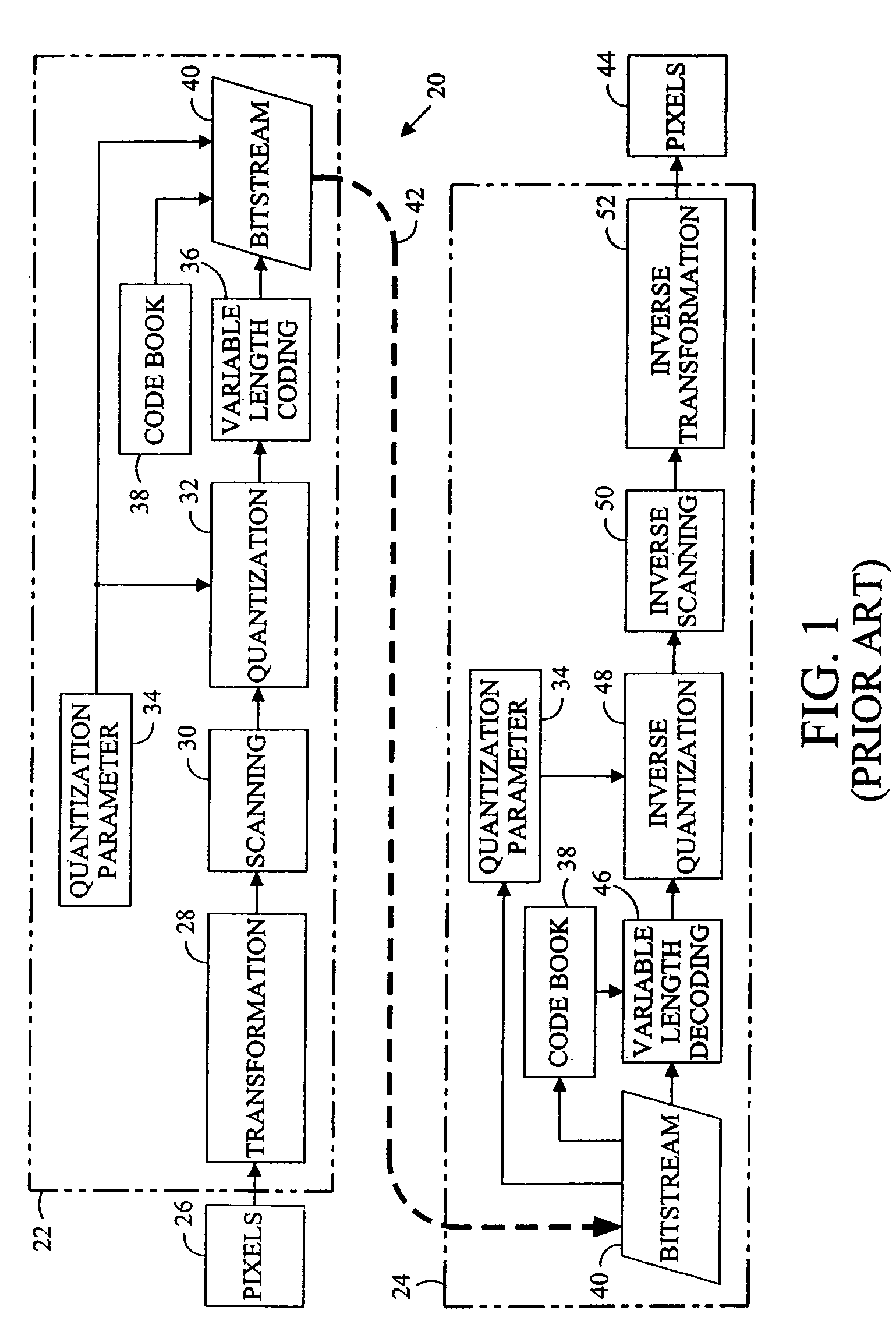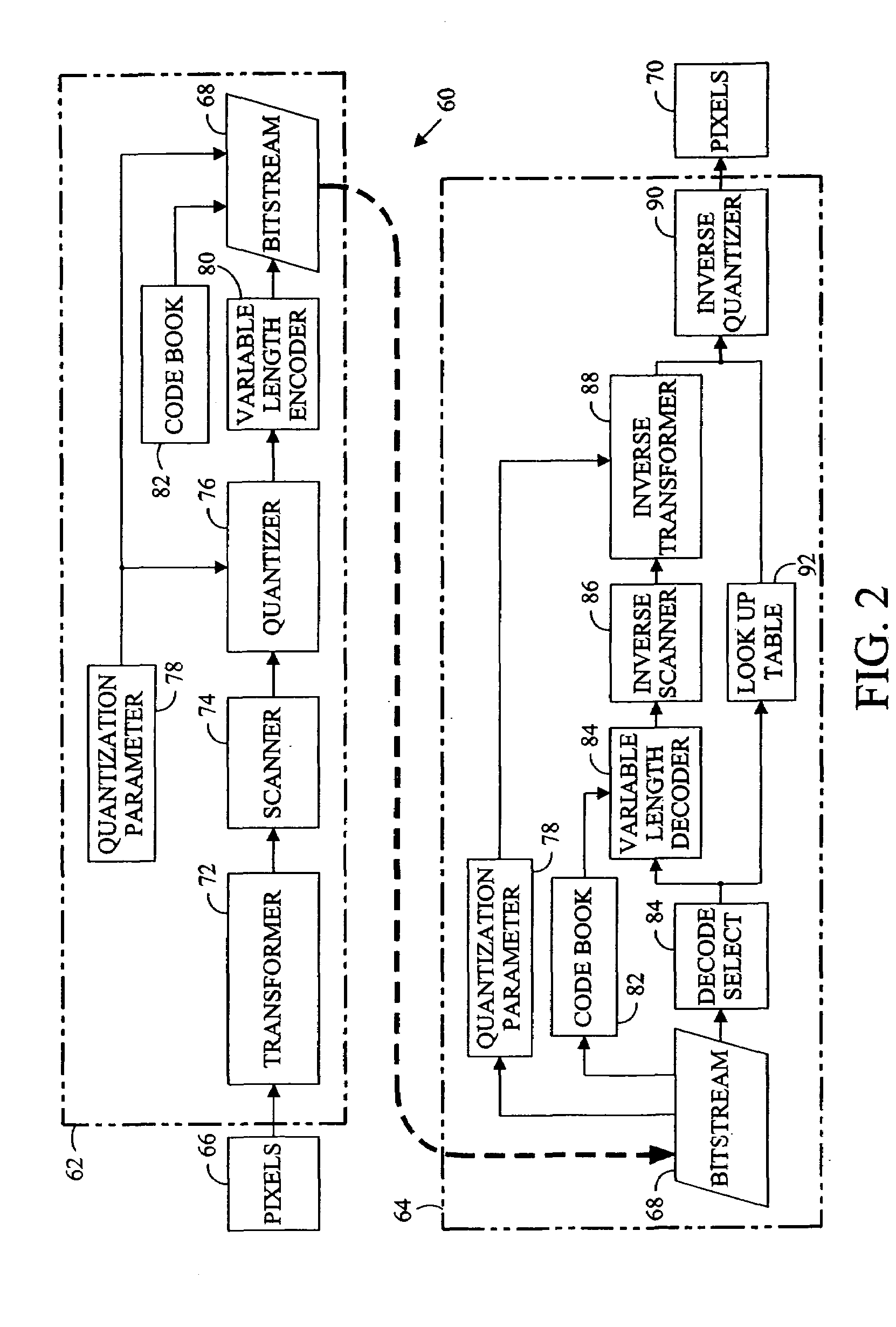Fast image decompression via look up table
a look up table and image technology, applied in image data processing, instruments, computing, etc., can solve the problems of image distortion, computational effort, and inability to meet the requirements of image representation, and achieve the effect of reducing the amount of data required to represent an image, reducing the cost of image distortion, and reducing the number of images
- Summary
- Abstract
- Description
- Claims
- Application Information
AI Technical Summary
Benefits of technology
Problems solved by technology
Method used
Image
Examples
Embodiment Construction
[0016]Digital images are commonly represented by an array of data expressing the intensities of a plurality of component colors for each of a plurality of picture elements or pixels arranged in a virtual rectangular array or grid. The values of the pixels are obtained by sampling the image at the coordinates of the corresponding pixel. Image sampling methods and apparatus, such as scanners and computer graphics programs, are capable very fine resolution of the sampled intensity. The intensity of each component color of a pixel is commonly specified by eight data bits (256 levels) but may be specified with as many as 10 or 12 bits. In addition, the area of the image represented by a pixel must be quite small if a viewer is to perceive the plurality of pixels as an image and not as a collection of colored dots. An image displayed on a computer monitor commonly comprises more than 300,000 pixels but may include more than 800,000 pixels. For motion video sixty or more images per second ...
PUM
 Login to View More
Login to View More Abstract
Description
Claims
Application Information
 Login to View More
Login to View More - R&D
- Intellectual Property
- Life Sciences
- Materials
- Tech Scout
- Unparalleled Data Quality
- Higher Quality Content
- 60% Fewer Hallucinations
Browse by: Latest US Patents, China's latest patents, Technical Efficacy Thesaurus, Application Domain, Technology Topic, Popular Technical Reports.
© 2025 PatSnap. All rights reserved.Legal|Privacy policy|Modern Slavery Act Transparency Statement|Sitemap|About US| Contact US: help@patsnap.com



